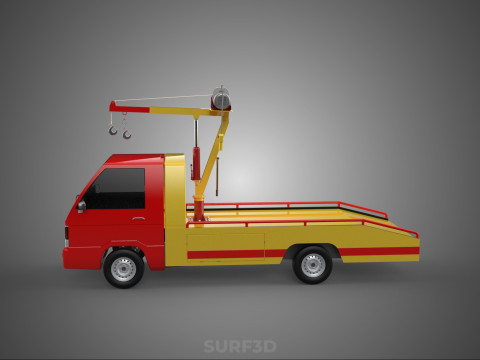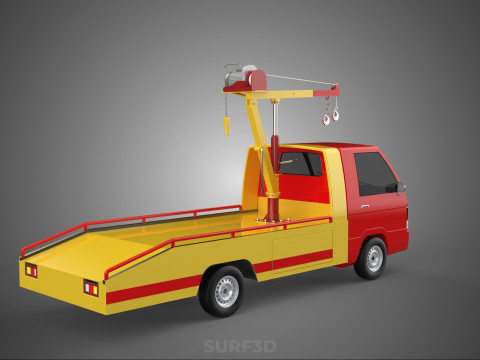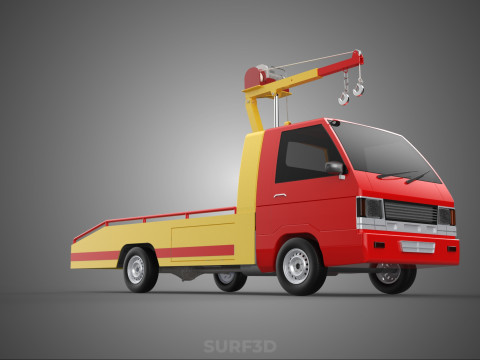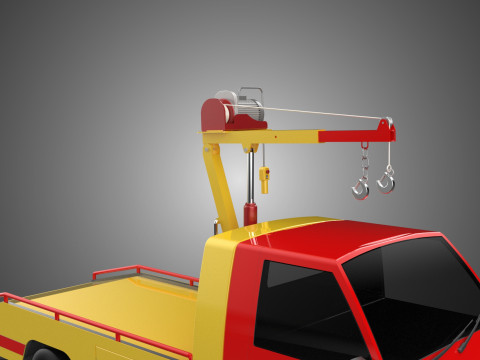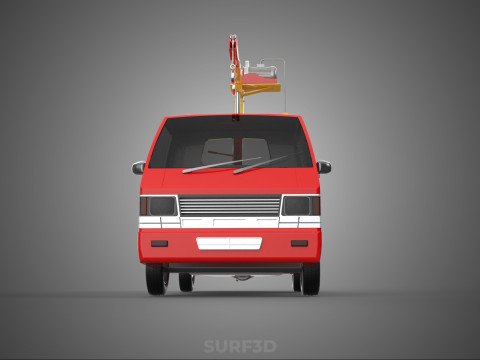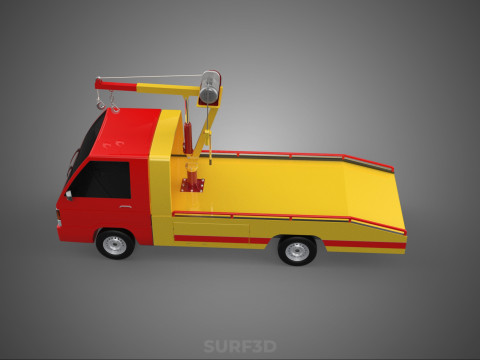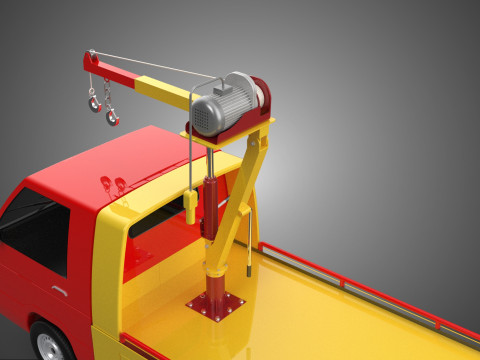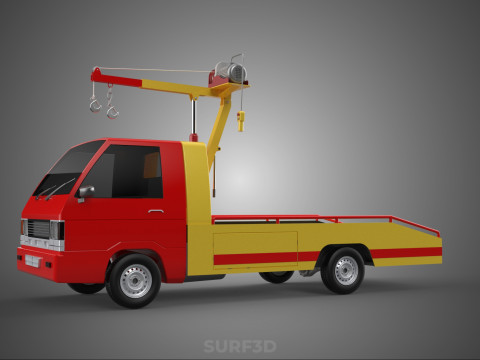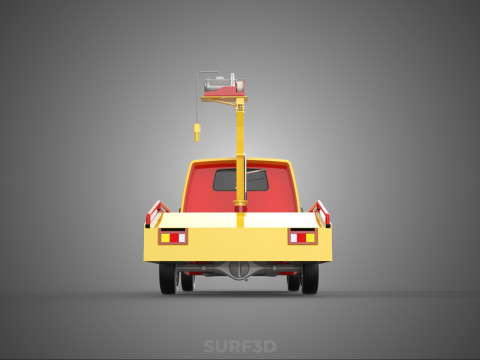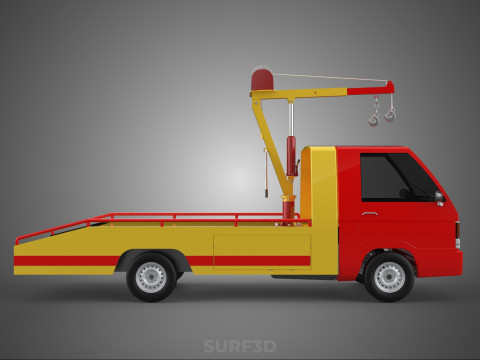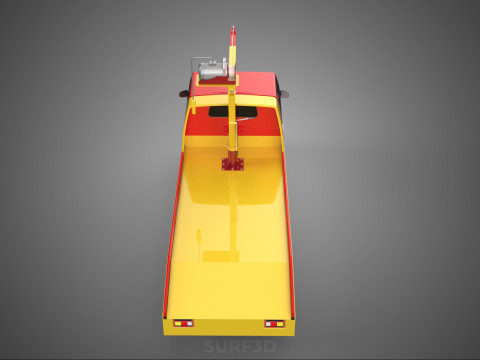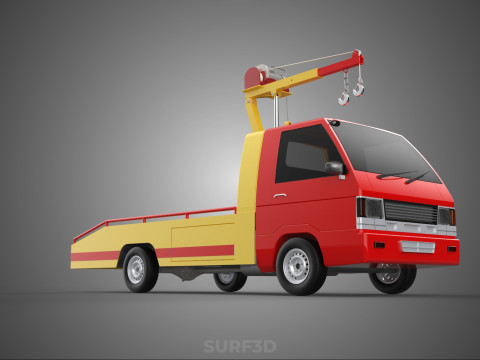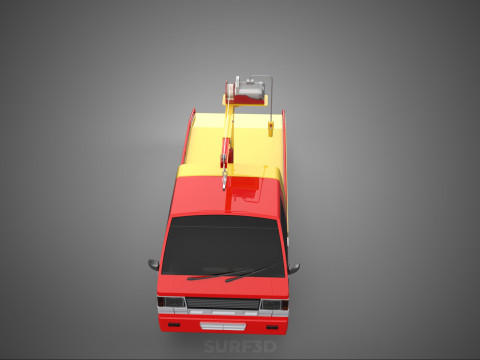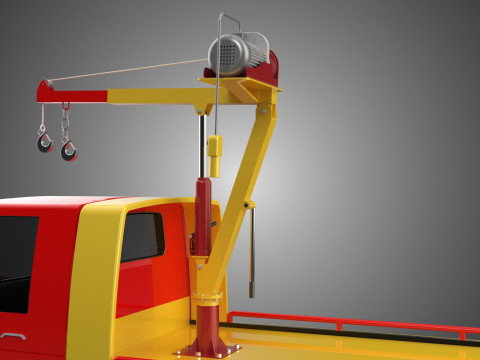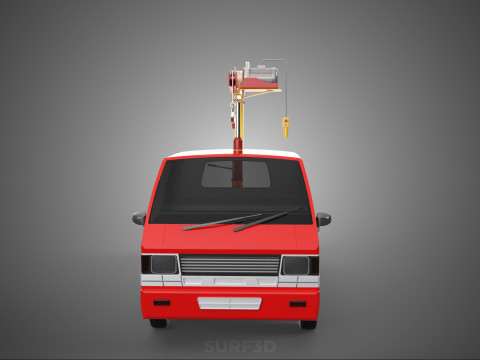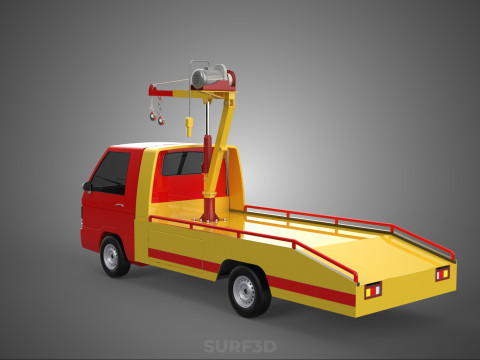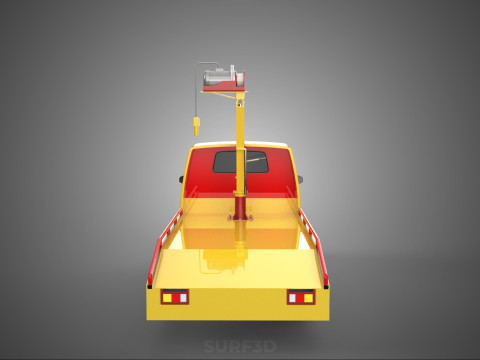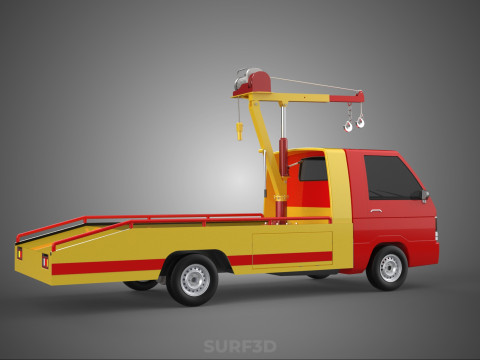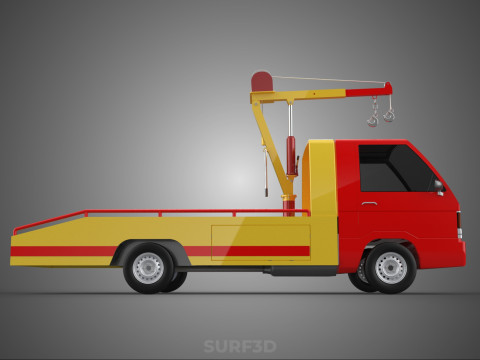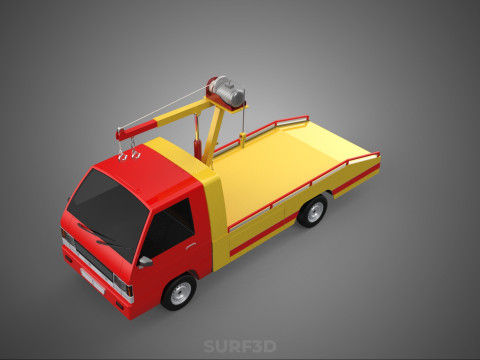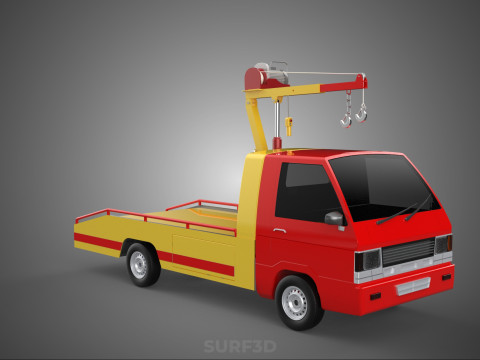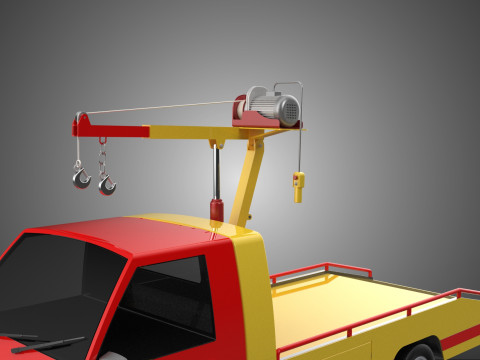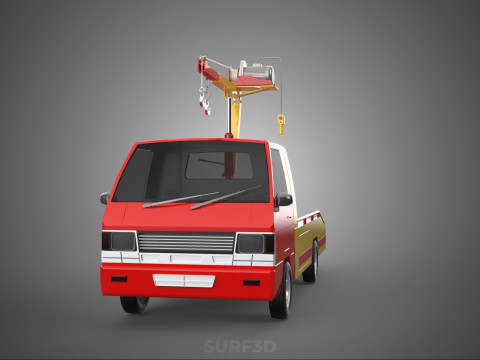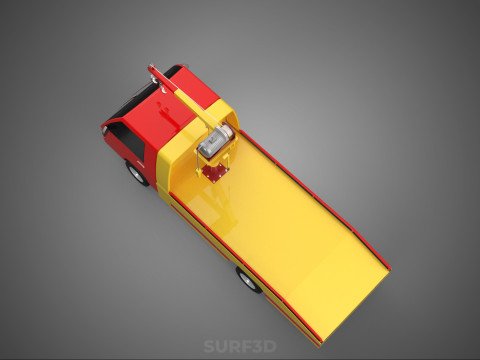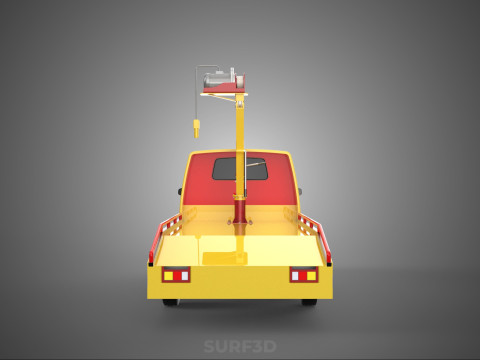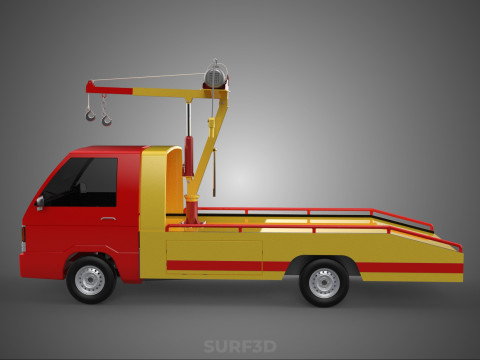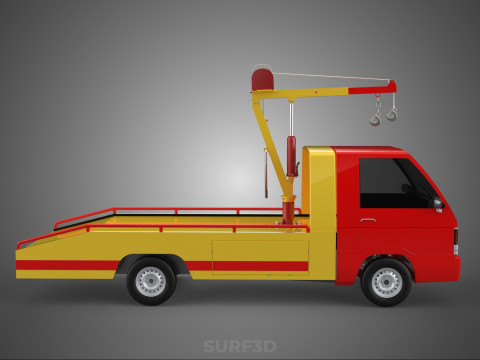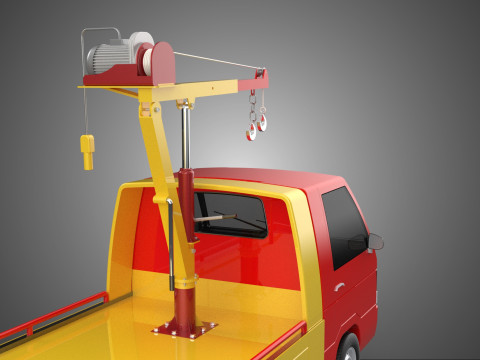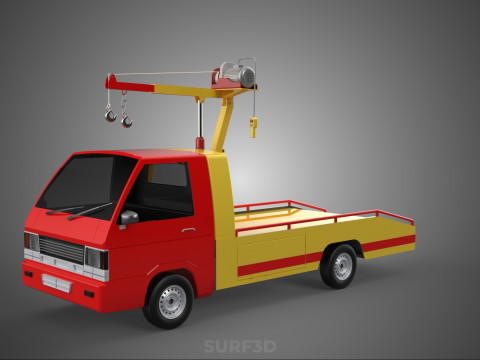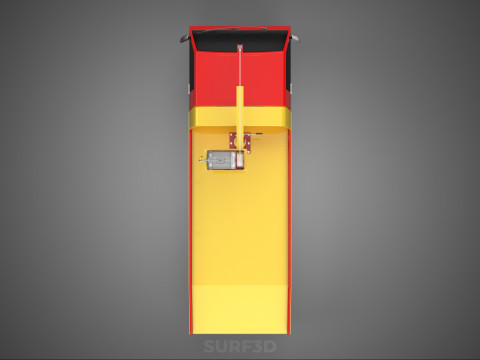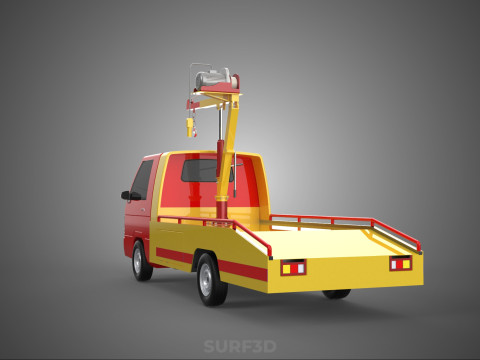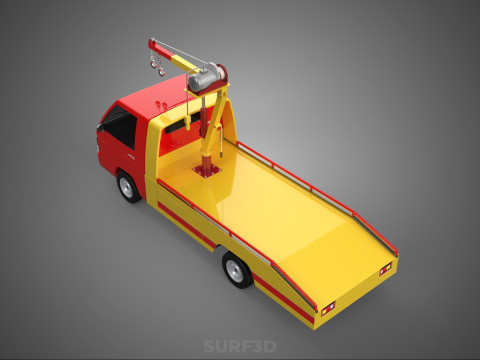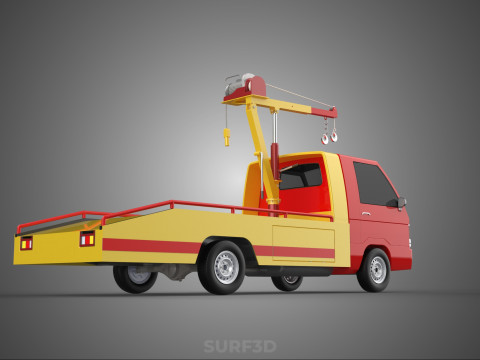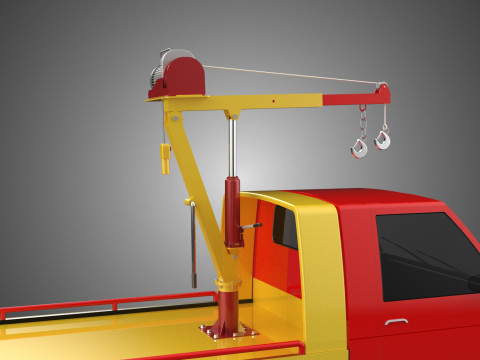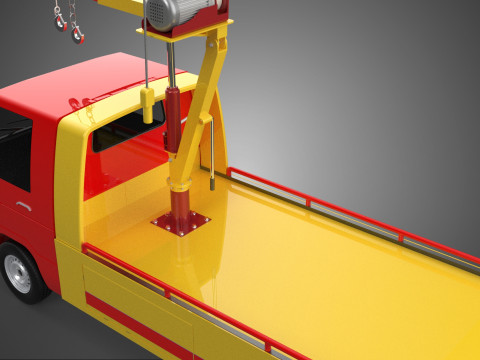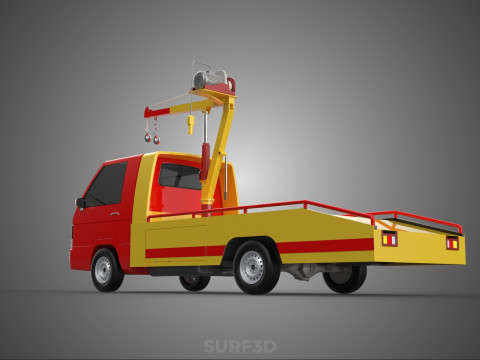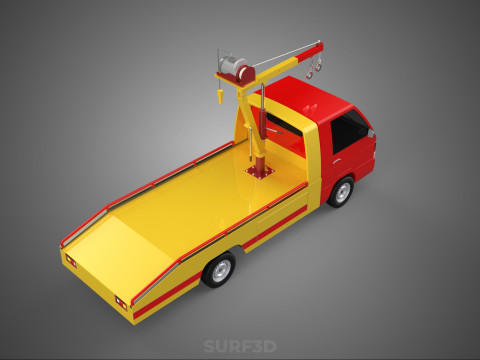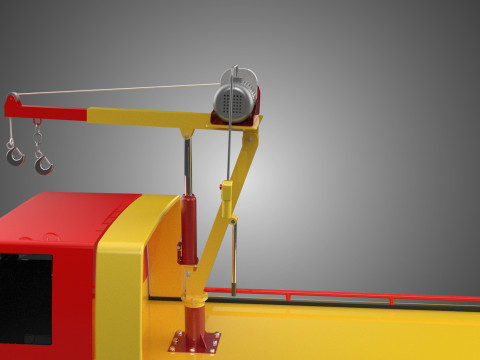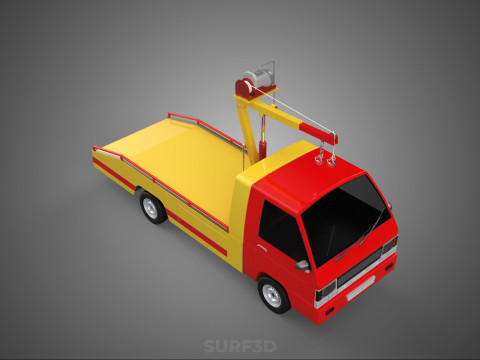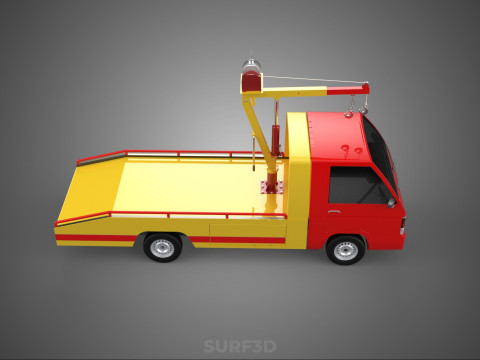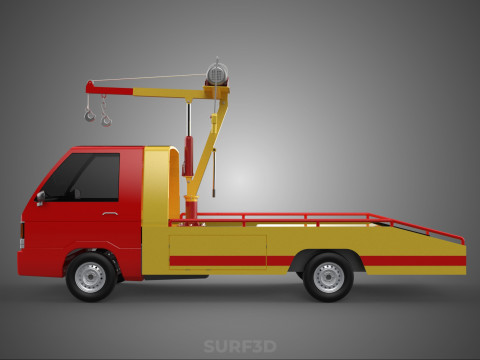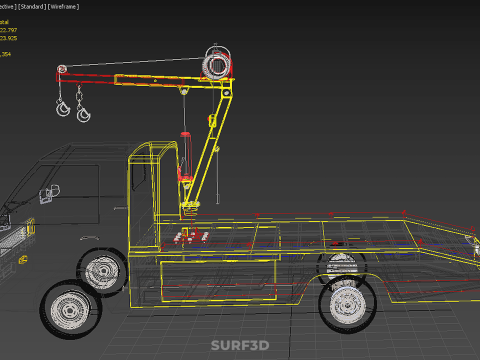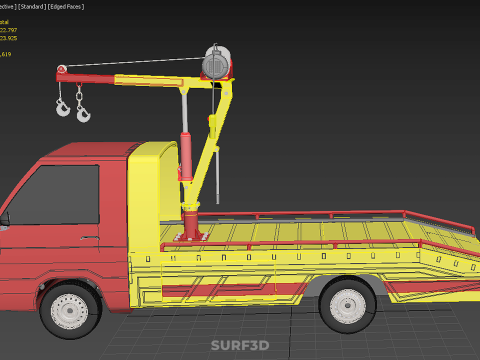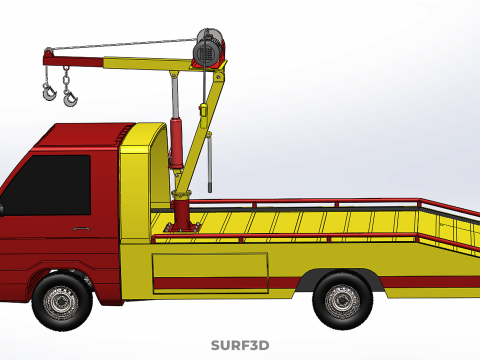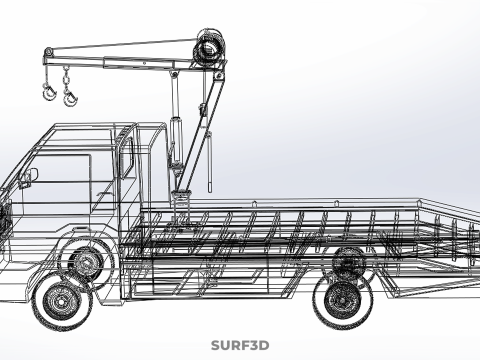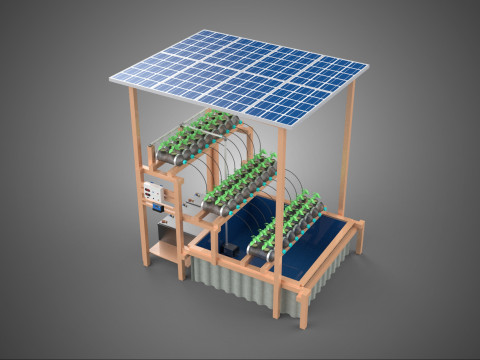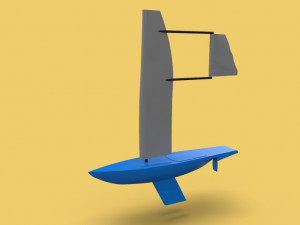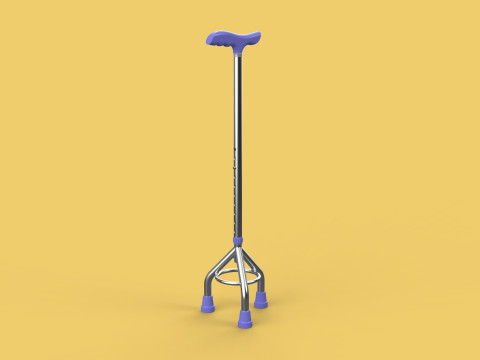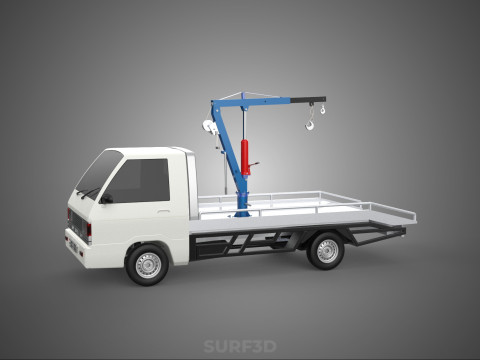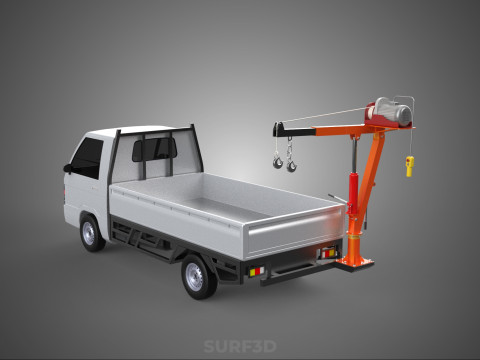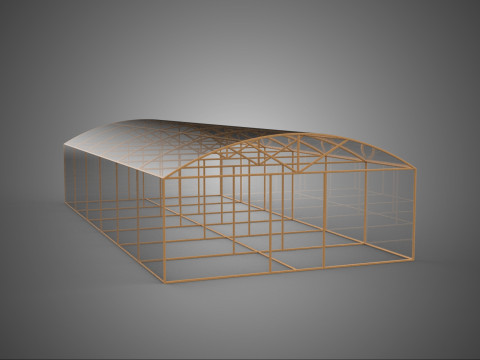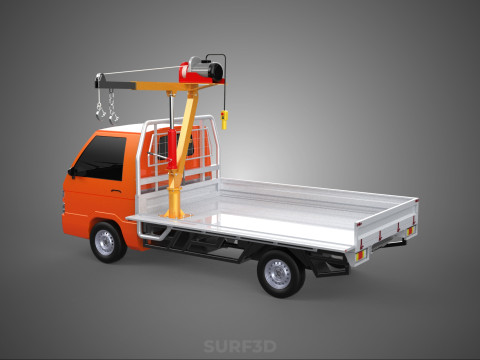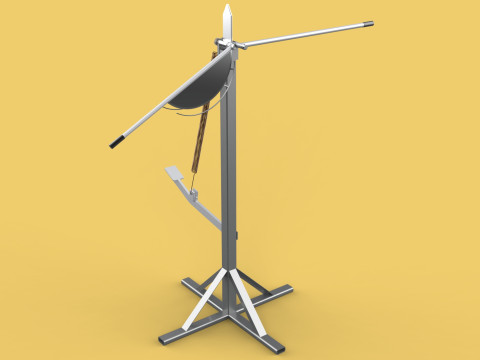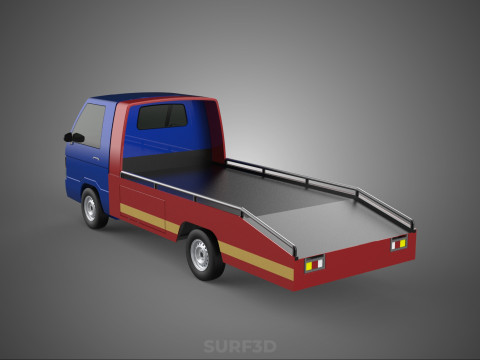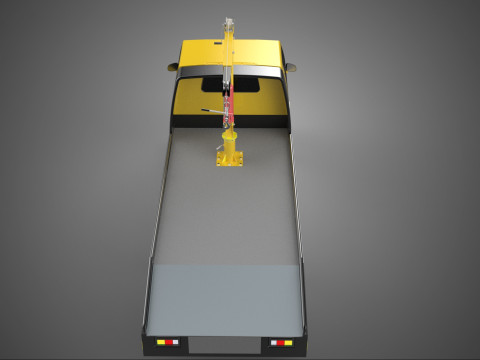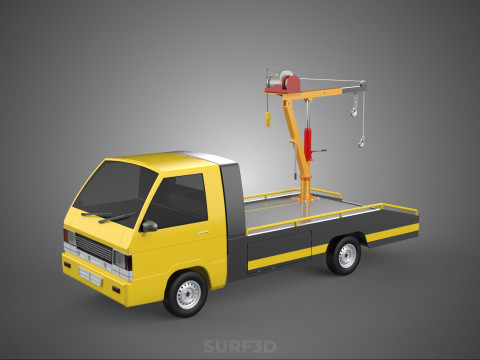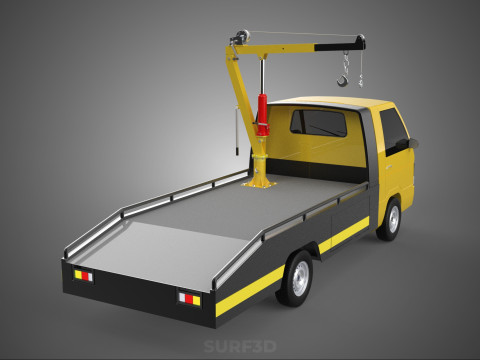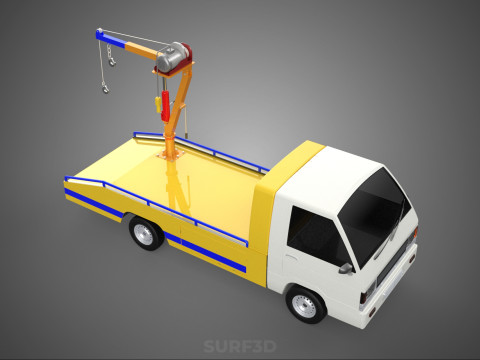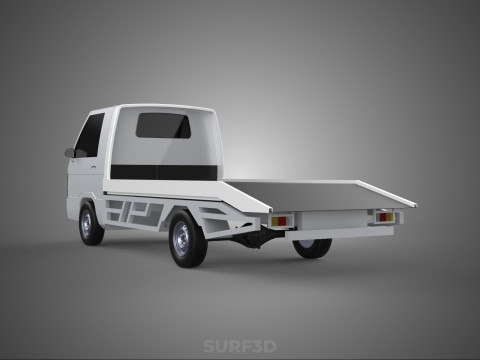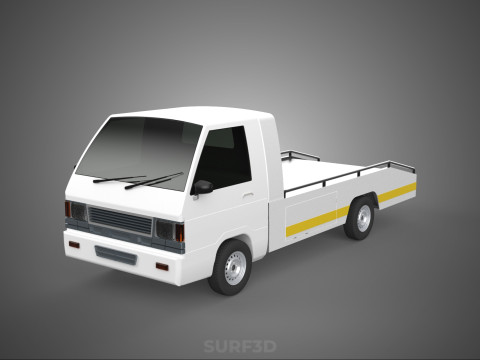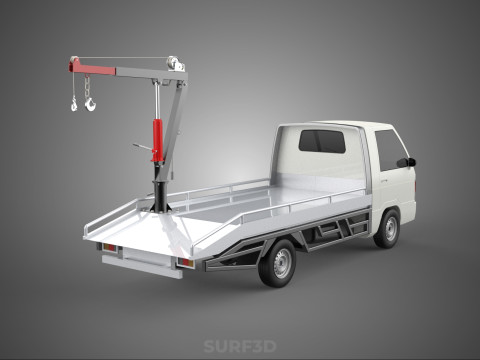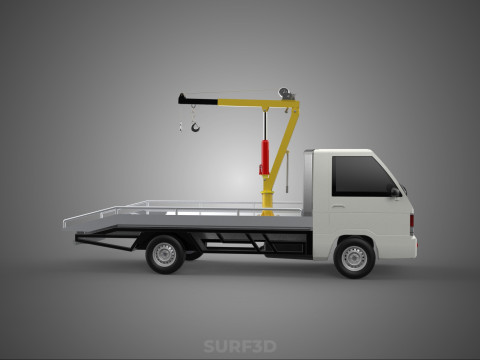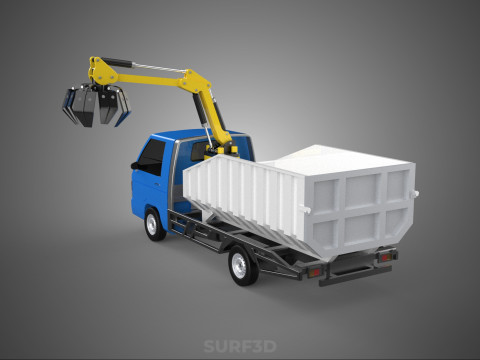EMERGENCY LIFTING HYDRAULIC CRANE RECOVERY TOWING TOW FIRE TRUCK Modèle 3D
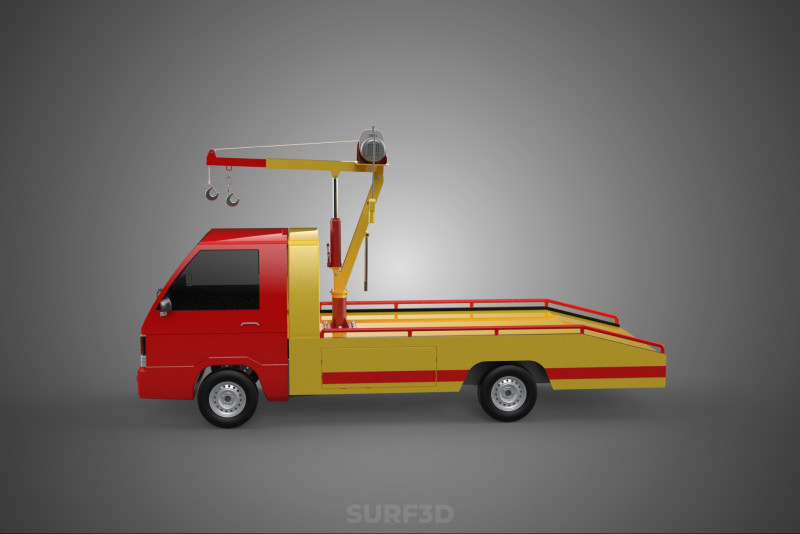
- Formats disponibles: Autodesk FBX (.fbx) 12.52 MB3D Studio (.3ds) 3.84 MBIGES (.iges) 7.05 MBCollada (.dae) 10.71 MBACIS(.sat) 15.19 MBSketchUp (.skp) 8.72 MBGLB (.glb / .gltf) 5.15 MBAutodesk AutoCAD (.dwg) 18.66 MBWavefront OBJ (.obj) 7.57 MBAutodesk 3DS MAX (.max) 23.80 MBBlender3D (.blend) 9.73 MBRhinoceros (.3dm) 25.71 MBStereolithography (.stl) 8.06 MBSTEP (.step) 7.45 MB
- Polygones:522797
- Sommets:423925
- Animé:No
- Textures:No
- Installé:No
- Matériaux:
- Bas-poly:No
- Collection:No
- cartographie UVW:No
- Plugins Utilisé:No
- Prêt à imprimer:No
- 3D Balayage:No
- Contenu adulte:No
- PBR:No
- IA Formation:No
- Géométrie:Poly NURBS
- UVs non enveloppés:Unknown
- Vus:177
- Date: 2025-08-15
- ID de produit:592770
High-quality 3D assets at affordable prices — trusted by designers, engineers, and creators worldwide. Made with care to be versatile, accessible, and ready for your pipeline.
Included File Formats
This model is provided in 14 widely supported formats, ensuring maximum compatibility:
• - FBX (.fbx) – Standard format for most 3D software and pipelines
• - OBJ + MTL (.obj, .mtl) – Wavefront format, widely used and compatible
• - STL (.stl) – Exported mesh geometry; may be suitable for 3D printing with adjustments
• - STEP (.step, .stp) – CAD format using NURBS surfaces
• - IGES (.iges, .igs) – Common format for CAD/CAM and engineering workflows (NURBS)
• - SAT (.sat) – ACIS solid model format (NURBS)
• - DAE (.dae) – Collada format for 3D applications and animations
• - glTF (.glb) – Modern, lightweight format for web, AR, and real-time engines
• - 3DS (.3ds) – Legacy format with broad software support
• - 3ds Max (.max) – Provided for 3ds Max users
• - Blender (.blend) – Provided for Blender users
• - SketchUp (.skp) – Compatible with all SketchUp versions
• - AutoCAD (.dwg) – Suitable for technical and architectural workflows
• - Rhino (.3dm) – Provided for Rhino users
Model Info
• - All files are checked and tested for integrity and correct content
• - Geometry uses real-world scale; model resolution varies depending on the product (high or low poly)
• • - Scene setup and mesh structure may vary depending on model complexity
• - Rendered using Luxion KeyShot
• - Affordable price with professional detailing
Buy with confidence. Quality and compatibility guaranteed.
If you have any questions about the file formats, feel free to send us a message — we're happy to assist you!
Sincerely,
SURF3D
Trusted source for professional and affordable 3D models.
More Information About 3D Model :
An "Emergency Lifting Hydraulic Jib Crane Recovery on Small To***g Tow Truck to Assist Firetruck" describes a highly specialized, multi-functional vehicle configuration designed for rapid deployment in emergent situations that demand both to***g capabilities and moderate-capacity heavy lifting, particularly in support of firefighting operations. This integrated system optimizes the agility and quick response time of a conventional small to medium-duty tow truck by equipping it with a hydraulic jib crane, enabling it to perform critical recovery, repositioning, and extrication tasks that might be inaccessible, excessive for standard to***g units, or disproportionate for larger, heavier recovery assets.
**Core Components and Functionality:**
1. **Small To***g Tow Truck Base:** The foundation of this system is typically a commercial truck chassis classified as light or medium-duty, equipped with standard to***g apparatus such as a wheel-lift, boom, or integrated deck. Its design prioritizes maneuverability, fuel efficiency, and quicker response times, making it suitable for navigating urban environments, narrow roads, or challenging terrains where larger recovery vehicles may struggle to access.
2. **Hydraulic Jib Crane:** This is a boom-type crane, powered by a self-contained hydraulic system, meticulously integrated onto the tow truck's frame. The "jib" refers to the horizontal or near-horizontal extension of the boom, which supports the lifting hook and provides extended reach and precision in load placement. These cranes are characterized by their ability to lift and precisely move heavy objects, with lifting capacities carefully matched to the structural integrity and stability limits of the underlying tow truck chassis.
3. **Stabilization Systems:** Crucial for safe crane operation, these vehicles are fitted with robust hydraulic outriggers or stabilizers. These extend laterally from the chassis to increase the vehicle's footprint, distribute the load over a larger area, and prevent overturning during lifting operations, especially when handling off-center or dynamic loads.
**Operational Context and Application:**
This specialized unit is primarily deployed for emergency recovery operations where the capabilities of a standard tow truck are insufficient, but a dedicated heavy recovery crane is either overkill, too slow to deploy, or physically unable to access the incident scene. Its specific utility in "assisting firetrucks" arises from a range of demanding scenarios:
* **Vehicle Entrapment:** Extracting fire apparatus—such as pumpers, ladder trucks, or tenders—that have become stuck in challenging conditions like mud, soft ground, ditches, or snow, particularly in off-road or unpaved areas.
* **Post-Accident Recovery:** Righting overturned fire trucks or other emergency vehicles involved in collisions, or carefully lifting damaged components to facilitate extrication of trapped occupants.
* **Scene Management:** Repositioning disabled or damaged fire apparatus to clear roadways, improve access for other emergency services, or create safe working perimeters at a complex incident scene.
* **Load Manipulation:** Lifting heavy equipment, large sections of debris, or compromised structural elements during a fire or rescue operation where a fire truck might be partially compromised, or where specific heavy objects need to be moved for operational efficiency or safety.
**Advantages and Limitations:**
**Advantages:**
* **Agility and Accessibility:** Its smaller footprint allows for rapid deployment and access to confined urban areas, narrow lanes, or difficult off-road locations often inaccessible to larger, heavier recovery vehicles.
* **Rapid Deployment:** Can typically reach incident scenes faster than specialized heavy-duty cranes, providing immediate initial support.
* **Versatility:** Combines essential to***g capabilities with lifting functionality, potentially reducing the need for multiple specialized vehicles at a single incident.
* **Cost-Effectiveness:** Generally offers a lower acquisition cost and potentially lower operational expenses compared to dedicated heavy recovery units.
**Limitations:**
* **Limited Lifting Capacity:** Inherently restricted by the tow truck's chassis strength, gross vehicle weight rating, and stability, making it unsuitable for the heaviest fire apparatus or very complex, high-tonnage lifting operations.
* **Stability Challenges:** Proper deployment of outriggers, precise load calculations, and adherence to lifting charts are critically important to prevent tipovers, especially on uneven or unstable terrain.
* **Reach Constraints:** The jib crane on a smaller platform may have more limited reach and height compared to larger, dedicated mobile cranes.
**Operational Procedures and Safety:**
The deployment and operation of such a hybrid unit necessitate highly trained operators proficient in both advanced to***g techniques and certified crane operations. Rigorous safety protocols, including precise load assessment, adherence to manufacturer's lifting charts, meticulous outrigger deployment, and clear communication, are paramount to ensure operator safety, prevent equipment damage, and avoid further complications at an emergency scene.
In summary, this specialized vehicle fills a critical niche within emergency services, providing a versatile and agile bridge ***ween standard to***g capabilities and heavy recovery. It is optimized for rapid, responsive support to fire departments and other emergency agencies in challenging and dynamic operational environments.
Si vous avea besoin d’\autre format veuillez ouvrir un billet d’\assistance et demandez le. Nous pouvons convertir les modèles de 3D en: .stl, .c4d, .obj, .fbx, .ma/.mb, .3ds, .3dm, .dxf/.dwg, .max. .blend, .skp, .glb. Nous ne convertissons pas les scènes 3D et des formats tels que .step, .iges, .stp, .sldprt.!


 English
English Español
Español Deutsch
Deutsch 日本語
日本語 Polska
Polska Français
Français 中國
中國 한국의
한국의 Українська
Українська Italiano
Italiano Nederlands
Nederlands Türkçe
Türkçe Português
Português Bahasa Indonesia
Bahasa Indonesia Русский
Русский हिंदी
हिंदी